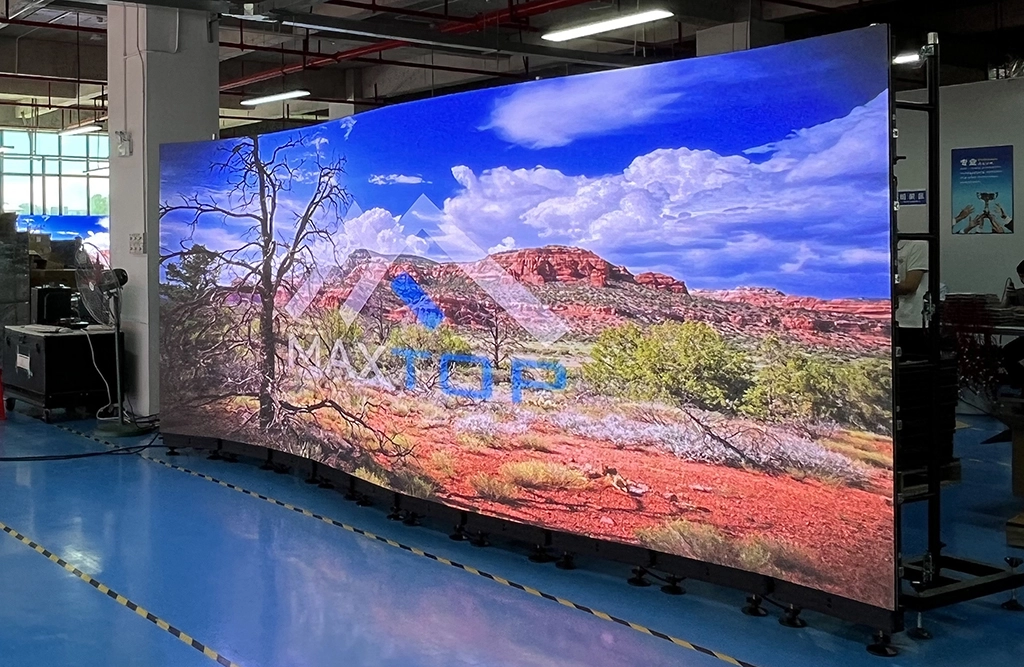Examining the Wide-ranging Connectivity Solutions Available for Light Emitting Diode Wall Panels
LED wall units have secured popularity for their ability to deliver high-quality imagery in various settings, from corporate environments to entertainment venues. One of the most significant aspects of these systems is their interface options, which allow users to connect them to multiple devices and systems. Understanding the diverse input options available for LED wall panels is essential for maximizing their use and effectiveness. This discussion explores these features, showcasing how they can adapt to various needs and preferences.

One frequent connection method for LED wall panels is High-Definition Multimedia Interface. HDMI is widely known for transmitting crisp video and audio signals between devices. This interface type is especially beneficial in business settings, such as meeting spaces or classrooms, where visual content or video content are often shared. By using digital connectors, operators can seamlessly connect laptops, projectors, and streaming equipment to LED wall panels, ensuring a clear and vibrant display of media.
Another popular interface option is DisplayPort, which is similar to High-Definition Multimedia Interface but offers additional benefits. Display Port can support higher refresh rates and resolutions, making it an ideal choice for interactive media or design-heavy applications. For those deploying LED wall panels in environments where output quality is critical, such as esports arenas or creative workspaces, Display Port can provide the required visual quality. Moreover, many modern computers and graphics cards include Display Port connections, making it a practical solution for tech-savvy users.
In contrast to High-Definition Multimedia Interface and DisplayPort, wireless connectivity methods are becoming increasingly common in LED wall panel solutions. Wireless connections allow users to share content without the requirement for physical cables, enabling a cleaner and more flexible setup. Platforms such as wireless internet and short-range communication allow users to connect smartphones, tablets, and laptops directly to LED wall panels without tangled wires. This convenience is especially beneficial in fast-paced settings like exhibitions or live functions, where quick changes to displays are often needed.
For larger installations or more complex configurations, network connectivity through wired networking is another viable option. Ethernet links provide a consistent and robust way to connect multiple LED wall panels within a network. This setup is ideal for electronic display applications found in shopping malls or transport hubs, where multiple panels may need to present coordinated content across a broad area. By using network cabling and routing hardware, operators can guarantee that all connected panels receive consistent data and content seamlessly.
Lastly, it's important to consider the future of connectivity with technologies such as USB-C and Thunderbolt Three. These newer connection types offer increased data transfer speeds and versatility by allowing one cable to handle both power delivery and data transmission. As more devices adopt these standards, Light Emitting Diode wall panels equipped with Type-C ports will likely become more common. This shift in connectivity not only improves the functionality of LED wall panels but also coincides with the emerging trend of minimalistic design in hardware arrangements by minimizing the number of cables needed.
In summary, examining the broad connectivity methods accessible for Light Emitting Diode wall panels reveals many possibilities for operators across various fields. From traditional methods like HDMI and Display Recommended Site Port to contemporary cordless technologies and LAN setups, each pathway serves specific functions suited to specific needs. Additionally, emerging technologies like USB-C promise further advancements helpful site in how users interact with Luminescent Diode wall panels. By understanding these connectivity alternatives, end-users can make strategic selections that enhance their overall experience with these versatile display tools.